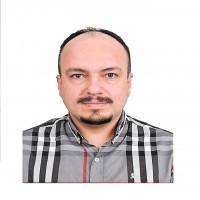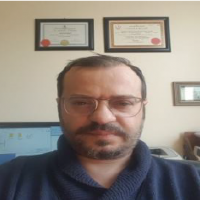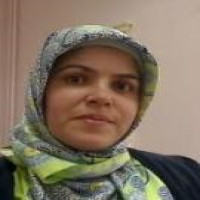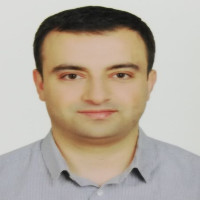Research Article
Review
Letter to the Editor
Issue Reviewers

 0000-0002-3799-4470
0000-0002-3799-4470


 0000-0003-1323-4511
0000-0003-1323-4511



 0000-0003-4969-3584
0000-0003-4969-3584



 0000-0003-2756-6277
0000-0003-2756-6277




 0000-0003-0464-6565
0000-0003-0464-6565

 0000-0002-9008-6631
0000-0002-9008-6631
 0000-0001-7013-0618
0000-0001-7013-0618

Aim & Scope
Journal of Harran University Medical Faculty (e-ISSN:1309-4025, ISSN:1304-9623) is an open access journal, the official publication of Harran University Faculty of Medicine. It aims to contribute to medical science by publishing high quality scientific articles on general medical topics.
Journal of Harran University Medical Faculty (e-ISSN:1309-4025, ISSN:1304-9623) is a multidisciplinary, peer-reviewed, open access, free of charge journal that publishes articles on general medical topics. It was first published in 2004. Journal of Harran University Medical Faculty publishes experimental and clinical original research articles, invited reviews, case reports and letters to the editor in areas related to medical sciences (basic, internal and surgical medical sciences). Articles are accepted in Turkish or English. Journal of Harran University Medical Faculty is published 3 times a year, in April, August and December of each year.
Writing Rules
INFORMATION FOR AUTHORS
The journal is the publication organ of Harran University Faculty of Medicine. Please read the following explanations when preparing an article for our journal. Harran University Faculty of Medicine Journal publishes clinical and experimental studies, letters to the editor, clinical case reports, technical and educational invited reviews, original images with the latest developments in medicine, video disease identification questions and letters to the editor that contribute to medical science and academic studies. Authors are not charged any fee during the article evaluation and publication process.
Acceptance for publication is based on the decision of at least two reviewers and the editorial committee. All kinds of publication rights of the articles accepted for publication belong to the journal. This right is determined with the signature of all authors with a specially designed publication right transfer form. The journal is published 3 times a year. The publication language of the journal is Turkish or English. English abstract is mandatory for Turkish articles and Turkish abstract is mandatory for English articles. The submitted manuscripts must be original and must not have been published in any journal before (Oral presentations and posters presented at scientific congresses are excluded). All kinds of responsibilities (ethical, scientific, legal, etc.) of the articles published in the journal belong to the authors. Articles that do not comply with the Spelling Rules and have a similarity rate of more than 25% in the plagiarism program are not evaluated.
WRITING RULES
Manuscripts submitted for publication should be written in Microsoft Word program. All articles, figures and graphics should be sent electronically. Except for the cover page, the names of the institutions and authors should not be mentioned anywhere in the manuscript.
All manuscripts should be arranged as follows.
1. Title Page
2. Turkish Abstract
3. English Abstract
4. Main Text (Manuscript)
5. Explanations
6. References
7. Tables
8. Figures and pictures
9. Subtitles
The article part (excluding abstract, references, tables, figures and captions) of research review articles should not exceed 4000 words in total, the abstract should not exceed 400 words, references should not exceed 40, and the number of tables and figures should not exceed 10. The limits are summarized in the table below. Case reports should consist of the following sections: Title, English title, Turkish and English abstract, introduction, presentation of the case(s), discussion and references. Case reports should not exceed 8 pages in total. Articles on technical and medical developments and image presentations of original subjects should not exceed 2 pages.
| Type | Word limit | Abstract word limit | Limit on the number of tables and figures | Reference limit |
| Original article | 4000* | 400 | 10 | 40 |
| Case report | 2000* | 2 | 10 | |
| Letter to the editor | 500 | 2 | 5 | |
| Image presentations | 300 | 2 | 3 | |
| Review ** | - | - | - |
*Excluding abstract, references, tables, figures and title
**No limit is applied.
PREPARATION OF ARTICLES
The text should be written in a simple and understandable style, adopt a scientific writing style and avoid unnecessary repetitions. The text should be written in Times New Roman 12-point font, double-spaced. Pages should be numbered in the lower right corner.
1 - TITLE PAGE
The title and short title of the manuscript should appear on the cover page. Both titles should be written in Turkish and English. The title of the article should not exceed 100 characters and the short title should not exceed 50 characters. The names, surnames, institutions, e-mail addresses and ORCID ID numbers of all authors who contributed to the study should be clearly written.
If the study has been presented in any congress before, the name of the congress, time (day-month-year and place of the congress) should be indicated.
If the study is derived from a graduate thesis, the date and thesis number (National Thesis Center) should be indicated.
At the bottom of the title page, the name, surname, open address, postal code, telephone and e-mail address of the author to be contacted should be written.
2- FULL TEXT
Full texts to be reviewed by the referees during the evaluation process should be uploaded to the system as a single file. The full text file should consist of the following sections and should be organized in this order.
a) Abstracts
The title of the manuscript should be short, easy to understand and describe the content of the manuscript. Turkish (Abstract) and English (Abstract) abstracts should be preceded by a title in Turkish and English. The abstract should be reflective of the article, important results should be given and their brief interpretation should be made. Abbreviations not explained in the abstract should not be used. The abstract should not exceed 400 words in research review articles and 200 words in case reports.
Abstract should be arranged as follows.
- Aim
- Materials and Methods
- Results
- Conclusions
These sections are not required in review and case report articles.
Keywords: Should be listed below the Turkish and English abstracts. A minimum of three and a maximum of five keywords should be included. Words should be separated from each other with commas (,). English keywords should be given in accordance with "Medical Subject Headings (MESH)" (www.nlm.nih.gov/mesh/MBrowser.html). Turkish keywords should be given in accordance with Turkish Science Terms (www.bilimterimleri.com).
All measurements should be written according to the metric system (International System of Units, SI). For example: mg/kg, µg/kg, mL, mL/kg, mL/kg/h, mL/kg/min, L/min/, mmHg, etc. Measurements and statistical data should be indicated by numbers unless they are at the beginning of a sentence. Numbers less than nine that do not express any unit should be written in writing.
Abbreviations in the text should be explained in parentheses where they are first used.
b) Main Text
In research articles, the main text should consist of the following sections.
- Introduction
- Materials and Methods
- Results
- Discussion.
Introduction: Information to explain the subject and the purpose of the study is included.
Materials and Methods: The place, time and planning of the study and the elements and methods used should be reported. Data collection, characteristics of patients and individuals, characteristics of the experimental study and statistical methods should be explained in detail.
Results: The data obtained should be presented together with the statistical results.
Discussion: The results of the study should be evaluated by comparing them with the literature.
All spellings should follow Turkish spelling rules and punctuation marks should be appropriate. Abbreviations should be avoided as much as possible, and if abbreviations are used, they should be explained in parentheses at the first mention. References, figures, tables and illustrations should be numbered according to the order in which they appear in the text.
c) References
References should be double-spaced. Source numbers should be given in ( ) before the period at the end of the sentence. If more than one source number is given, "," should be placed between the numbers, and if more than two consecutive source numbers are given, "-" should be placed between the numbers [e.g. (1,2), (1-3)]. If a journal is used as a source: year, volume, issue, start and end pages are given. If a book is used as a source: only the year, beginning and end pages are given. Surnames and initials of the authors should be written in the references. If the number of authors in the references is more than 6, the names of the first 6 authors are written and the names of the following authors are replaced with "et al." in English references and "ve ark." in Turkish references. Journal names should be abbreviated according to Index Medicus. The way of writing references should be like the examples below. Personal opinions and unpublished manuscripts should not be cited as references.
National Library of Medicine (NLM) style (https://www.nlm.nih.gov/bsd/uniform_requirements.html) should be used for in-text and end-of-text citation.
References should be organized in the language in which the manuscript is written and as shown in the examples below.
Articles in journals
Koyuncu I, Gonel A, Kocyigit A, Temiz E, Durgun M, Supuran CT. Selective inhibition of carbonic anhydrase-IX by sulphonamide derivatives induces pH and reactive oxygen species-mediated apoptosis in cervical cancer HeLa cells. J Enzyme Inhib Med Chem. 2018; 33(1):1137-49.
The names of national journals published in Türkiye (except indexed ones) should be written in full.
Öztürk İA, Ertürk C, Bilge A, Altay MA, Altay N, Işıkan UE. The Effect of Surgical Treatment Methods on Compartment Pressure in Tibial Fractures. Journal of Harran University Faculty of Medicine. 2017;14(3):160-70.
Supplement
Solca M. Acute pain management: Unmet needs and new advances in pain management. Eur J Anaesthesiol 2002;19 Suppl 25: S3-10.
Unpublished online article
Das RR, Singh M, Naik SS. Vitamin D as an adjunct to antibiotics for the treatment of acute childhood pneumonia. Cochrane Database Syst Rev. 2018 Jul 19;7:CD011597. doi: 10.1002/14651858.CD011597.pub2. [Epub ahead of print] Review.
Books
1) Krogman WM, Iscan MY. The Human Skeleton in Forensic Medicine. Second ed. Springfield Illinois: Charles Thomas Publisher, 1986:189-243.
2) Beard SD. Gaines PA, eds. Vascular and Endovascular Surgery. London: WB Sounders, 1998:319-29.
Chapter from a Book
1) Soysal Z, Albek E, Eke M. Fetal rights. Soysal Z, Çakalır C, ed. Forensic Medicine, Volume III, Istanbul University Cerrahpaşa Medical Faculty Publications, Istanbul, 1999:1635-1650.
2) Freidman WF. The intrinsic properties of the developing heart. In: Sonneblick E, Leschi M, Friedman WF, eds. Neonatal Heart Disease. New York: Grunestratton, 1999:21-50.
Internet article
Abood S. Quality improvement initiative in nursing homes: The ANA acts in an advisory role. Am J Nurs [serial on the Internet] 2002 [cited 12 Aug 2002]. Available from: www.nursingworld.org/AJN/2002/june/wawatch.htm
Website
Cancer-pain.org [homepage on the Internet]. New York: Association of Cancer Online Resources [updated 16 May 2002; cited 9 July 2002]. Available from: www.cancer-pain.org
Thesis
Gezer R: Morphological Characteristics of Rugae Palatina and Individual Differences. Master's Thesis, Şanlıurfa: Harran University Institute of Health Sciences, 2016.
d) Remarks
Author contributions, conflict of interest, ethical approval, financial resources (if any), contributing institutions, organizations and individuals should be indicated in this section.
Relationship of interest: If the authors have any relationship of interest, this should be disclosed.
Acknowledgments: This section should include people or institutions that are not mentioned as authors but should be thanked.
e) Tables, Figures, Pictures and Graphics
Tables and figures (drawings, pictures, graphs, micrographs, radiographs, etc.) must be named, numbered in the order of their occurrence in the text and indicated at the end of the relevant sentence where they are mentioned in the text. Tables (Table 1, Table 2, ...) and figures (Figure 1, Figure 2, ...) should be numbered consecutively and Roman numerals should not be used. Tables and figures should be given on a separate page after the references in the main text. Table captions should appear above the table and figure captions should appear below the figure. Explanations of tables and figures and their abbreviations in alphabetical order should be at the bottom. Magnification ratio and technique should be explained in microscopic images. Images should be clear with a minimum resolution of 300 dots per inch (dpi).
The editorial board may make changes it deems necessary without changing the essence of the manuscript.
COMPLIANCE WITH PUBLICATION ETHICS
Manuscripts must comply with the Declaration of Helsinki (https://www.wma.net/what-we-do/medical-ethics/declaration-of-helsinki/). Manuscripts must be prepared in accordance with research and publication ethics. Authors should state that they accept the ethical principles in all human clinical trials and that they conduct the research in accordance with these principles. In the Materials and Methods section, they must state that they have obtained approval for each prospective and retrospective study from the ethics committee of the institution where the clinical research is conducted and that they have obtained informed consent from the participants or their guardians; in experimental studies involving animals, they must state that they protect animal rights and that they have obtained approval from the relevant experimental animal ethics committee. The ethics committee approval document must be submitted during the application to the journal regarding the results of experimental studies on humans or experimental animals. The author(s) should inform the Editor on the submission page if there is a commercial connection or an institution that provides financial support for the study; what kind of relationship with the commercial product, drug, company, etc. used. The absence of such a situation should also be stated on a separate page.
For studies requiring ethics committee approval, the Ethics Committee Approval Document must be uploaded to the system during the manuscript submission process and information about the permission (name of the committee, date and number) must be specified in the Materials and Methods section and also in the remarks section after the discussion section of the manuscript.
Research requiring Ethics Committee approval is as follows.
All kinds of research conducted with qualitative or quantitative approaches that require data collection from participants using survey, interview, focus group study, observation, experiment, interview techniques,
Use of humans and animals (including materials/data) for experimental or other scientific purposes,
Clinical trials in humans,
Research on animals,
Retrospective studies in accordance with the law on the protection of personal data, (In studies with archival scanning, the permission document obtained from the institution where the study was conducted should also be uploaded to the system when requested).
In the Case Reports-Series, the patient's open identity should not be shared and it should be stated that the "Informed Consent Form" has been obtained from the patient regarding permission for publication.
EVALUATION AFTER REVİEWER REPORT
Authors should write the corrections requested in the reviewer’s report as an answer in the answer section allocated to them. They should also make the necessary changes in the manuscript and resubmit it online by indicating (coloring) them in the manuscript.
FINAL CHECK LIST
1. The Transfer of Publication Rights Form has been completed and signed,
2. Author Contribution Form filled and signed,
3. Title and Short Title written in Turkish and English,
4. The abstract does not exceed 400 words in the article and 200 words in the case report,
5. Turkish and English Keywords (between 3-5),
6. References written in accordance with National Library of Medicine (NLM) style guidelines,
7. Tables and figures are numbered at the end of the main text,
8. Ethics committee approval and "informed consent form" information was added,
9. It was informed that it was not submitted to another journal (letter to the editor),
10. It is double-spaced, written in Times New Roman 12-point font, and the pages are numbered in the lower right corner.
Ethical Principles and Publication Policy
Ethical Principles and Publication Policy
PUBLICATION PRINCIPLES
Journal of Harran University Medical Faculty Committee on Publication Ethics (COPE), Directory of Open Access Journals (DOAJ), Open Access Scholarly Publishers Association (OASPA), Budapest Open Access Initiative (BOAI), and World Association of Medical Editors and International Committee of Medical Journal It applies the publishing principles stipulated and accepted by the Editors (ICMJE) organizations. In addition, Harran University Medical Faculty Journal applies the publishing principles determined by DergiPark under the umbrella of TÜBİTAK ULAKBİM.
1. Journal of Harran University Medical Faculty (e-ISSN: 1309-4025 - ISSN: 1304-9623) is a multidisciplinary peer-reviewed journal that publishes articles on general medical issues. It started to be published in 2004. Articles are accepted in Turkish or English.
It is published 3 times a year, in April, August and December.
ULAKBİM TR Index is included in Turkey Citation Index. No fee is charged from the authors during the evaluation process and publication phase. All articles submitted for publication are evaluated by the editor, editorial advisory board and referees. All articles in the journal are open access and can be downloaded free of charge.
2. In our journal, original articles, reviews, case reports and short papers written in Turkish/English are being evaluated for publication.
3. Only scientific research studies of original nature are included. Qualities such as being new, suggesting a new method, or adding a new dimension to previously existing knowledge are sought.
4. Manuscripts submitted for publication are evaluated by at least two external referees as double-blind; The acceptance-rejection decision is made by the Editorial Board. Invited review articles are limited to a few and no refereeing requirement will be sought. Invited compilation is published after editor approval.
5. The works requested to be published must not have been published anywhere or sent to any journal for publication. For this, a cover letter is requested from the responsible author when they send the article (See: Nature Research).
6. All responsibility of the works belongs to their corresponding authors. The works should be prepared in accordance with the internationally accepted scientific ethical rules. A copy of the Ethics Committee Report must be attached to all studies that require ethical approval.
7. In the articles sent to our journal, forgery (fabrication), falsification, plagiarism (plagiarism, plagiarism), slicing (salamization), unfair signature (gift authorship, gift authorship), ghost authorship, publishing a publication more than once Responsibility for compliance with international ethical principles such as (duplication) belongs to the authors. If such a situation is detected before or after publication in any research, the article is withdrawn from the journal. See: COPE.
8. For the works accepted to be published in our journal, the signed Copyright Transfer Form must be uploaded to the system.
9. Manuscripts submitted for publication in our journal should be prepared according to journal writing rules. The writing rules can be accessed from the link https://dergipark.org.tr/tr/pub/hutfd/writing-rules.
10. Necessary changes should be made by the author within 10 days after minor changes in the article decision, 20 days after major changes, and 30 days after the revision that needs to be rewritten. If the requested corrections are not made by the author on time, the editor writes a warning letter to the author. If there is a delay again, the article will be rejected.
The publication of a peer-reviewed journal requires the continued work, responsibility, obligation and cooperation of interested parties. Interested parties: Authors, Reviewers, Editors and Board Members. Editors are responsible for maintaining/monitoring publishing ethics and keeping academic records.
ETHICAL PRINCIPLES
Journal of Harran University Medical Faculty is a peer-reviewed scientific journal based on high ethical and editorial standards. Editorial review is based on the recommendations of the Committee on Publication Ethics (COPE). Cope's recommendations for ethical mandate, responsibilities, and open access in this journal are considered. See: Committee on Publication Ethics (COPE) and the Turkish version of COPE in DergiPark
No fee is charged for the articles and other processes uploaded to the Journal of Harran University Faculty of Medicine and all accepted articles are published, read and downloaded free of charge. Poster or oral presentations presented at scientific meetings held in the fields of health can be published as supplementary issues. For this reason, Harran University Medical Faculty Journal has adopted ICMJE (International Committee of Medical Journal Editors), BOAI (Budapest Open Access Initiative) and DOAJ (Directory of Open Access Journals) as its principles. All Harran University Faculty of Medicine Journal members and authors are in compliance with the basic rules and recommendations set by COPE.Must be aware of the relevant rules.
It is mandatory to obtain permission from the Ethics Committee / Institutional Review Board for all studies on humans and test animals. “Documents and information requested for studies requiring ethics committee approval” should be uploaded to the system. Upload the ethics committee approval in PDF or JPEG format (Not required for case report-series and review articles). In case reports, it is necessary to include information that the informed consent/consent form was signed in the article. In studies that require ethics committee permission, information about the permission (name of the committee, date and number) should be included in the Material and method section and also on the first/last page of the article. In addition, in the Material and method section, the statement "Declaration that the study was carried out in accordance with the international declaration, guideline, etc." should be included.
Peer Review Policy
The aim of the peer review process is to ensure that qualified and original scientific studies are published. The peer review process for all articles published in Journal of Harran University Medical Faculty is as follows.
Preliminary Control
All manuscripts submitted to the journal are first subjected to a preliminary evaluation by the Editor and Secretary. Manuscripts that do not fall within the scope of publication of our journal or do not comply with the format of a scientific manuscript in terms of content and form conditions, or with a similarity rate of more than 25%, may be rejected and rejected or revision may be requested without starting the reviewing process.
At this stage, no article can be accepted for publication by the editor without a positive reviewer report.
Reviewer Evaluation
Our journal uses a double-blind reviewing system in which the names of the reviewers and authors are kept confidential at every stage of the process.
Manuscripts that pass the preliminary control stage are sent by the secretary to the relevant field editor together with the similarity report. It is sent to three reviewers determined by the editor. The reviewers are selected from the reviewer pool, taking into account their areas of expertise.
The reviewers evaluate the manuscripts in terms of originality, methodology, contribution to the literature, presentation of findings and support of conclusions, and utilization of previous studies. Reviewers may accept or reject the manuscript, or ask the authors to make corrections to the format and/or abstract. For an article to be accepted for publication, at least two reviewers must give a favorable opinion.
If the reviewers or reviewers request corrections, the author(s) shall complete the requested corrections within 30 days at the latest, taking into account the criticisms and suggestions made by the reviewers, and resubmit them to the Editorial Commission. Manuscripts not accepted for publication will not be returned to the authors.
AUTHOR
All authors must make significant contributions to the research. Subjects such as plagiarism, forgery, distortion, unfair authorship are the responsibility of the authors. If detected, the article will be rejected. An article in progress cannot be sent to another journal or published. It is the author's responsibility to upload "documents and information requested for studies requiring ethics committee approval" to the system. Our journal made it mandatory for the authors to define the ethics committee that approved the study. In addition, the submitted article is expected from the authors to comply with the standards recognized below.
Declaration of Helsinki
US Federal Policy for the Protection of Human Subjects
European Medicines Agency Guidelines for Good Clinical Practice
Scientific research should comply with the principles described in the Higher Education Institutions Scientific Research and Publication Ethics Directive, the internationally recognized Declaration of Helsinki, the US Federal Policy on the Protection of Humans and the European Medicines Agency's Good Clinical Practice Guidelines. Research ethics COPE, ICMJE and experiments on humans, as well as the international guidelines set out in the Declaration of Helsinki for Animal Experiments and Horizon 2020 should be followed.
Studies Requiring Ethics Committee Permission are as follows.
All kinds of research conducted with qualitative or quantitative approaches that require data collection from the participants by using survey, interview, focus group work, observation, experiment, interview techniques.
• Use of humans and animals (including material/data) for experimental or other scientific purposes,
• Clinical studies on humans,
• Research on animals,
• Retrospective studies in accordance with the law on the protection of personal data,
Moreover;
• Indicating that “informed consent form” was taken in case reports,
• Obtaining and specifying permission from the owners for the use of scales, questionnaires, photographs belonging to others,
Statement that copyright regulations are complied with for the intellectual and artistic works used
Reviewer Evaluation Period
Journal of Harran University Medical Faculty aims to complete the total reviewing process of an article within 10 weeks (70 days), including the preliminary evaluation phase of 1 week, the reviewer evaluation phase of 8 weeks and the final evaluation phase of 1 week. The author(s) submitting an article to Journal of Harran University Medical Faculty are deemed to have accepted the peer review conditions and process of the Journal.
EDITOR
Journal Editors are committed to complying with all COPE Code of Conduct standards. Editors should not have a conflict of interest regarding the accepted or rejected articles. Only articles that will contribute to the field should be accepted. Manuscripts that do not reach the intended level, studies that are not considered scientifically sufficient are rejected by the editor without explaining the reason. An invitation is sent to the referee through the journal system. The referee accepts or rejects the invitation within 7 days. If accepted, the evaluation process is 15 days. If he/she cannot complete the evaluation within 15 days, additional time is given if he/she wishes.
JOURNAL MANAGEMENT
Journal management and editors will take the necessary steps to prevent the publication of articles that are determined to be abusive on the topics mentioned above for the authors. In no event should the journal or its editors encourage or allow such abuses to occur. If the publisher or editor of the journal is notified of any alleged research misconduct, the publisher or editor will deal with the allegations appropriately.
The journal will allow articles to be retracted or corrected as needed. The journal is willing to publish corrections, clarifications, retractions and apologies as needed.
Final Evaluation
The Editorial Board makes the final evaluation for all articles that are approved by the reviewers and reach the publication stage. Articles deemed "suitable for publication" are placed in the publication queue.
Price Policy
No fee is charged from the authors during the article evaluation and publication process.
Harran Üniversitesi Tıp Fakültesi Dergisi / Journal of Harran University Medical Faculty

